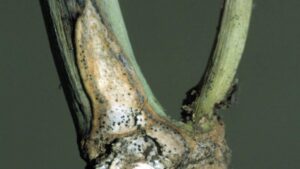While some say the heydays of Canadian forage and turf seed are gone, others say the best is yet to come.
_x000D_
Forage seed started the Canadian seed trade. Companies were founded on it. Regulatory and trading systems were created to facilitate the sector. Plant breeders focused on it and entire careers were spent in it._x000D_
_x000D_
The sector has changed significantly over the last century. In the 1950s it was the backbone of the seed industry in Canada. Common seed was king and trains of “B-mixture” forage seed could be seen moving from Ontario to Quebec. Speculators accumulated seed, gambling that prices would rise, and deals were done on handshakes._x000D_
_x000D_
As farms became more specialized, competition from cash crops, for dairy feed formulation and for land increased. Where forages were used, the demand for specific varieties grew. Governments slowly moved away from forage research and breeding and the cost of complying with regulations increased. Some companies got bigger and some disappeared._x000D_
_x000D_
Some say the “heydays” of Canadian forage and turf seed are gone._x000D_
_x000D_
“I say with sadness that the forage seed sector in Canada may have passed its peak,” says Martin Pick, former vice-chairman of Pickseed. “The old days of carload after carload of B-mixtures going to Temiskaming are over.”_x000D_
_x000D_
Others are confident that the best is yet to come. What are the opportunities for the future of the forage and turf seed sector? What are the challenges? We asked some forage and turf seed sector leaders._x000D_
The Challenges
_x000D_
Competition for Land — There is a growing trend away from forage crops in Canada. Pick says he sees it wherever he goes. “Livestock production has changed. Producers are feeding more cereal grains and corn silage,” he says. “That and the higher value of cash crops means that fields that used to produce hay are now planted with corn or soybeans.” Lloyd Dyck, chairman of BrettYoung Seeds, agrees. “Hay crops are only grown where there is customer demand and recently the true cost of producing hay is not realized in its price. It is not a preferred crop when compared to cash crops like corn,” he says._x000D_
_x000D_
Pick also wonders about turf. “Growing urban areas with denser populations mean smaller or no lawns at all, and the need for land for housing means fewer golf courses,” he says. These have been the major markets for turf seed. I can’t see much growth for turf seed in the future.”_x000D_
_x000D_
_x000D_
Government Policy — Terry Ewacha, executive vice-president at DLF Pickseed, says uncertainty around the biggest domestic market for forages, Canada’s dairy industry; is a major challenge. He is concerned about the future of supply management in Canada._x000D_
_x000D_
“There are so many things that are out of our control, but the supply management system offsets some of the risk and provides stability for dairy producers and those of us who serve them,” he says. “If dairy farmers lose that security, I am afraid that the sector will consolidate even further.”_x000D_
_x000D_
He cites the experience of some countries in Europe after the EU abolished the dairy quota system in 2015. An analysis done in late 2016 in Denmark states that since the end of supply management in Europe, producer prices on average have dropped by about 25 per cent in that country. It says that many European dairy farmers are operating below the cost of production._x000D_
_x000D_
“Dairies are going out of business in Denmark,” says Ewacha. “I think the Government of Canada needs to review the European experience before making any decisions on supply management here. If the dairies are gone, the demand for forages and the seed to plant them will decline.”_x000D_
_x000D_
Access to Improved Varieties — Access to new genetics is another challenge for the forage seed sector. Dyck says that in order to compete domestically and internationally, the forage sector needs new and always-improving varieties._x000D_
_x000D_
“But fewer new genetics are available to the seed sector,” he says. “Public breeding, which was always the mainstay of the sector, is virtually gone and the gap is not yet being filled by the private sector. For example, there are only three companies left in the world that are breeding alfalfa.”_x000D_
_x000D_
Consolidation — Everyone seems to agree that consolidation will continue in the forage and turf seed sector. There isn’t, however, complete agreement on whether that is a challenge or an opportunity. Dyck says it is definitely a challenge for some. The large companies created by consolidation increase the stakes for medium-sized companies. “Companies need to grow or go,” he says. “And that can lead to overextension and increased risk.”_x000D_
_x000D_
Ewacha agrees. He says there are big changes coming in the sector in as few as 10 years. “Many of Canada’s older, established seed companies are not looking to make the kinds of investments needed to expand,” he says. “The businesses are run by owners who are getting older, often with nobody to take over the business, so they could be looking for someone to buy them, further increasing consolidation and reducing competition.”_x000D_
_x000D_
Consolidation will also have an impact on the growers of forage seed. Kurt Shmon, president of Imperial Seeds, says that the future will see very few independent seed growers. “Already more than 75 per cent of the forage seed in Canada is grown under contract with specific seed companies,” he says. “I think that will continue and grow.”_x000D_
_x000D_
Ron Cornish, general manager of Alforex Seeds, sees consolidation as inevitable and necessary. “Larger companies are better able to make the investments in plant breeding and research that are required to deliver new improved varieties to growers. They are also better equipped to develop new markets domestically and internationally and to deal with growing regulatory challenges,” he says. “But while consolidation will continue, I do think that small- and medium-sized seed businesses will also continue, offering forage and turf seed varieties that they will license from developers.”_x000D_
The Opportunities
_x000D_
Cornish is optimistic about the forage seed sector. “I don’t think it has had its time. It has its cycles. We are in a down cycle right now with the trend to cash crops and the increased use of corn silage and other grain-based feeds for livestock,” he says. “But I think the pendulum has swung way too far away from forages and health problems are starting to develop, particularly in dairy herds. The opportunity is there to present improved forage varieties to livestock producers for herd health, economic and environmental reasons.”_x000D_
_x000D_
Growing Population and Changing Demands — “There is a growing global market for forages,” says Cornish. “The market is the rumen: beef and dairy cattle, sheep, goats and even camels. As populations grow and develop, people want to consume more protein including from meat, fresh milk, cheese and other dairy products. China is a perfect example. Hay exports to China have been breaking records month over month because the Chinese want to feed livestock to supply the demand for protein.”_x000D_
_x000D_
Environmental Sustainability — Cornish says the focus on environmental sustainability also presents opportunity for forages. “Urban populations around the world are going to control more and more of what we do with our agricultural land,” he says. “The drive towards increased environmental sustainability is going to require farmers to get back to the basics of crop rotation. Forage crops can play a strong role.”_x000D_
_x000D_
Pick agrees. “Forages can make a tremendous contribution to soil health and can have an important place in cash crops, fixing nitrogen and fighting weeds,” he says. “That is a bright spot for the sector.”_x000D_
_x000D_
Domestic and international regulatory requirements that require the ‘greening’ of the countryside; the control of nitrates to improve water quality; management of river basins and waterfronts; and habitat development for beneficial insects can also be opportunities for forage and turf species. Shmon says: “Canadian seed companies, mine included, are renewing their interest in cover crops. A couple of interesting ones are tillage radish that can be used to combat soil compaction and reduce weed pressure; and Phacelia that is in big demand in Europe as a cover crop and bee forage.”_x000D_
_x000D_
Technology — In addition to delivering a better product for livestock producers, technology will help forages and turfgrasses to find their places on the land in the future. “Growing world populations will require that agricultural production move out onto more marginal land that may be dryer and saltier,” says Cornish. “Technology is going to play a strong role in the work to get improved forages and turf grasses to thrive in those more marginal areas.”_x000D_
_x000D_
Genetic engineering is producing forage, turf and bioenergy crops that contain substantial improvements for growers, end users and the environment. A paper published in 2012 in the Annals of Botany by the Samuel Roberts Noble Foundation highlights current benefits of genetic engineering that include improved digestibility of tall fescue and alfalfa (such as Forage Genetics International’s HarvXtra varieties); enhanced drought tolerance in alfalfa, white clover and creeping bent grass; enhanced salt, cold and freezing tolerance in perennial ryegrass, creeping bentgrass and tall fescue; and many more._x000D_
_x000D_
Mike Peterson, alfalfa trait lead at Forage Genetics International, sees genetic engineering as an important tool that allows alfalfa breeders to make improvements not possible through conventional breeding._x000D_
_x000D_
_x000D_
“The HarvXtra (low lignin, high digestibility) GE trait delivers improved levels of fiber digestibility simply not possible through conventional selection”, Peterson states. “In the next 10 years, the alfalfa research community will have to deliver performance improvements greater than what we’ve achieved in the last 50 years, and the continued integration of GE traits into new alfalfa varieties will be a major contributor to achieving that goal.”_x000D_
_x000D_
Cornish says that while genetic engineering is going to continue to play a role, other new breeding techniques will grow in importance. “It is expensive to get traits into varieties using current genetic engineering techniques,” he says. “New breeding technologies, including Cisgenesis, and gene editing technologies like CRISPR will help scientists to find better ways to get technology into crops. In addition, marker assisted breeding will allow breeders to seek out specific, important traits like salt and drought tolerance. This technology will be available to the forage seed sector, and if they show value to the grower, the rumen and the environment, the investment will be there.”_x000D_
_x000D_
Cornish says there will still be demand for forages from conventional breeding. For example, in 2015 Alforex made Hi-Gest low-lignin alfalfa varieties available to growers. “These varieties are products of selective conventional breeding,” he says._x000D_
_x000D_
Cornish identifies another benefit of technology, specifically for Canada. “The advancement of biotechnology and the strong trading relationship between Canada and the United States is creating a growing opportunity for Canadian growers,” he says. “We are seeing a growing market in the United States for certified non-GE alfalfa seed grown in southern Alberta. I think it will continue to grow.”_x000D_
_x000D_
International Trade — International trade is going to be more important for the Canadian forage seed sector in the future. According to Shmon, the United States will continue to be a very important market, but other markets will grow in importance._x000D_
_x000D_
“China will continue to grow as a market for Canadian forages and forage seed, as will other Asian countries and those in Eastern Europe, particularly countries that require forage seed to contain no products of biotechnology,” he says. “Non-detect markets around the world will be important for Canadian seed exports.” Cornish adds: “The Ukraine and Russia are also very good prospects for forage seed exports and, because of growing water issues, countries in the Middle East will need imported forages, increasing opportunities for seed.”_x000D_
Change is Constant
_x000D_
Industry participants mostly agree that the forage and turf seed sector has a strong future in Canada. It will continue to face challenges and like the rest of agriculture, will go through its ups and downs, but the opportunities for the sector are strong. It seems the only constant in this sector is change itself._x000D_
_x000D_
“I don’t see our sector in decline,” says Dyck. “I see it continuing to change and adapt to domestic and international requirements.” Those comments are echoed by Ewacha. “The forage and turf seed sectors will continue to change,” he says. “But I believe it is a steady industry and will continue to be that way well into the future. Change will continue as ‘evolution, not revolution.’”















